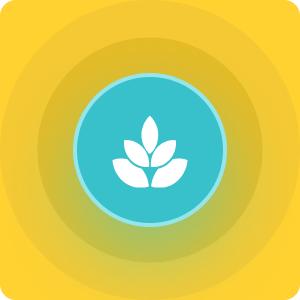COMMUNITY
SUBMIT CONTENT
Crop Health Management
What is IoT-Enabled Crop Health Management?
Crop health management utilizes modern information and communication technologies, like IoT-enabled sensors or drones, to monitor the condition of crops as well as critical environmental factors, like moisture levels. Smart agriculture applications boast improved operational efficiency and allow farmers to quickly respond to if conditions threaten their yield.
Value Proposition=
In the United States, 20 to 25 percent of all crop yields are lost due to pests, crop disease, or post-harvest losses. These losses mean not only lost revenue from a decreased yield but wasted water, fertilizers and time spent manually monitoring and tending to crops.
Traditional methods for monitoring crops rely heavily on human labor, sometimes including a physical inspection of each inidividual plant for parasites or disease. This method is not only costly, but it’s also highly prone to human error – say, missing a diseased leaf or failing to notice an infestation, which can quickly degrade the quality of an entire yield.
While IoT crop health management or monitoring solutions require a higher upfront cost, they can provide much more flexibility to scale, decrease operational costs over time, and provide a more reliable long-term solution.
How it Works
Crop monitoring solutions use sensors to track environmental changes in real-time. This can include conditions like temperature, humidity, precipitation, and soil quality. In cases of swift environmental changes, like an overnight freeze, crop monitoring solutions can enable farmers to respond immediately, even if they aren’t on-site.
Key Benefits of IoT-Enabled Crop Health Management
- Reduce the human labor required to monitor the condition and health of crops, minimizing human error and reducing labor costs.
- Maintain historical records of changes in environmental factors to make better, more informed decisions.
- Receive real-time alerts to infestations, disease or changes in critical environmental conditions to reduce crop loss and decrease response time.
- Loop in remote stakeholders by providing access to crop conditions from anywhere.
 Solutions
Solutions
More Solutions

Semios Frost Dashboard
Semios’ frost dashboard allows you to quickly verify frost conditions of a networked orchard.

Semios Disease Model Conditions and R...
Industry standard crop disease models powered by on-site sensors for optimum accuracy.


Libelium Smart Agriculture
Libelium's Smart Agriculture solutions include a wide range of agriculture sensors for a great variety of agricultural applications.
 Articles
Articles
More Articles
 eBooks
eBooks
More eBooks
50+ IoT Applications
50+ IoT Applications
 Categories
Categories
More Categories
COMMUNITY
SUBMIT CONTENT









